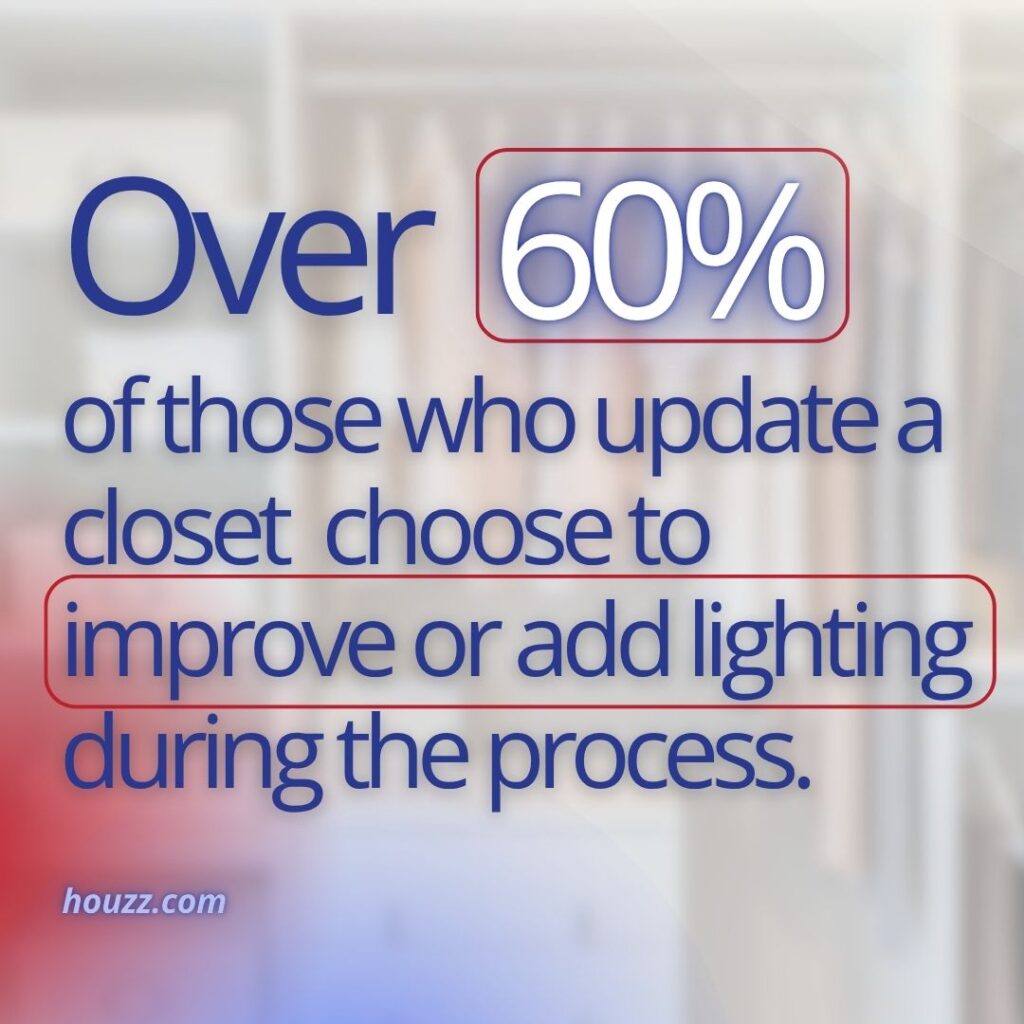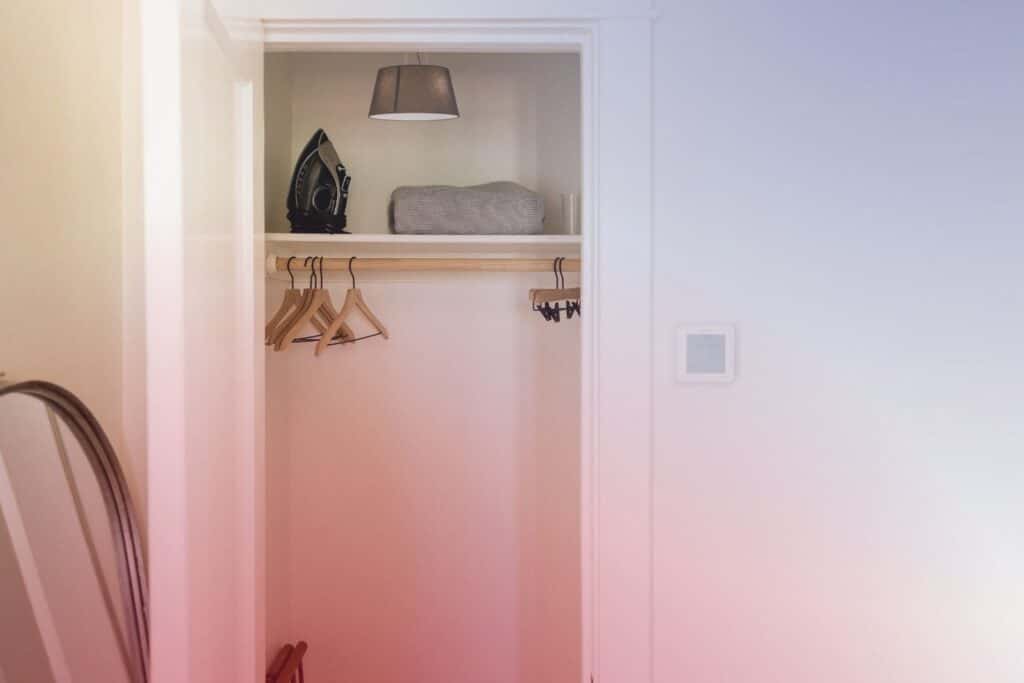Opening a closet with insufficient light and fumbling for your things can be frustrating. Whether it’s a hallway coat closet, bedroom wardrobe, or utility space, lighting makes a big difference in how usable that space really is.
But closet lighting isn’t just about convenience. There are electrical codes that apply to these enclosed spaces to help reduce fire risks. If your closet doesn’t have a light, or you’re thinking about adding or upgrading one, there are a few things to keep in mind before installing a fixture.
Here’s what homeowners should know about closet lighting safety, available fixture options, and what inspectors often flag during a home evaluation.
Why Closets Sometimes Don’t Have Lights
Not every closet is wired for lighting. There are a few reasons for this:
- Size: Small closets, like linen or hallway closets, often aren’t required to have lighting under local building codes
- Cost savings: In older homes or budget builds, closet lighting may have been left out to reduce costs
- Age of the home: Some properties were built before modern electrical code updates for closet lighting took effect
Even though a closet light may seem like a small detail, installing one the wrong way can create a fire hazard or become a safety issue during resale.

Closet Lighting and Electrical Code Basics
Lighting a closet involves more than just adding a bulb. There are national and local codes that regulate the type of fixture, bulb placement, and required clearance from shelves or storage.
The National Electrical Code (NEC) outlines minimum distances and safe fixture types for enclosed storage areas. North Carolina follows the NEC, and many other states do as well.
Here are some of the key guidelines:
- Bare bulbs are not allowed in most closets. Fixtures must be enclosed or have a protective cover
- Incandescent bulbs must have at least 12 inches of clearance from shelves or clothing
- Fluorescent lights need a minimum of 6 inches of clearance
- LED fixtures are typically safer in low-clearance spaces but must still be rated for enclosed installation
- Pull-chain fixtures are outdated and often don’t meet modern code
According to the National Fire Protection Association, lighting equipment is involved in nearly 20% of home electrical fires, often due to improper installation or poor placement near flammable materials.
Even if your home isn’t newly built, code violations can be flagged during a home inspection, especially when a fixture creates a potential hazard.
Options for Adding or Upgrading Closet Lighting
Depending on the layout and size of your closet, there are several safe and practical lighting options available.
1. Battery-Operated LED Lights
These lights are easy to install and don’t require wiring. Many are motion-activated and use adhesive or screws for quick mounting. They’re ideal for small closets where hardwiring isn’t practical.
2. Hardwired LED Fixtures
These are more permanent and typically require installation by an electrician. Hardwired LEDs offer strong illumination and can be connected to wall switches or motion sensors. Make sure the fixture is approved for close-range use in enclosed areas.
3. LED Strip or Puck Lights
These low-voltage options are popular in custom closets. They can be installed under shelves or around the closet frame and are often used in combination with motion sensors or dimmers.
4. Smart Lighting
Smart closet lights can be controlled by an app or smart home system. Some activate automatically when the door opens, while others respond to voice commands. As long as they meet clearance and fixture requirements, they’re a great modern option.
Lighting upgrades are more popular than ever. In fact, a 2023 Houzz survey found that over 60% of homeowners updating their closets choose to improve or add lighting during the process.
Whatever fixture you choose, it should be installed away from shelves, clothing, and storage bins to reduce the risk of overheating.
Related Questions and Answers
Is a closet light required by code?
Not always. Closets are not required to have lighting, but if a fixture is installed, it must follow NEC rules. Local codes may have additional requirements, especially in new construction or when remodeling.
Can I install a closet light myself?
Battery-powered options are safe for DIY use. If you’re adding wiring or a switch, hire a licensed electrician to avoid safety hazards and ensure code compliance.
What if my home inspector finds a closet lighting issue?
If a fixture is too close to flammable materials or violates current code, it will likely be flagged on your inspection report as a safety concern. While not always urgent, it’s something you’ll want to correct before listing or renovating.
Are motion-sensor lights a good choice for closets?
Yes. They’re convenient and reduce the need for switches. Just make sure the sensor activates reliably when the door opens and that the light source still meets spacing and fixture requirements.
When to Call a Professional
If you’re adding or replacing a closet light in an older home, or you’re unsure what’s behind your walls, it’s best to get help from a licensed electrician. Even small lighting projects can lead to code violations or fire hazards if done improperly.
Before you invest in a remodel or list your home for sale, a home inspection can also uncover potential lighting issues. At America’s Choice Inspections, we evaluate closet lighting as part of a full electrical system review. Our inspectors work throughout Charlotte and surrounding areas, helping homeowners catch small issues before they turn into big ones.
In fact, electrical issues are among the top three categories of problems flagged during North Carolina home inspections, with improper lighting and fixture placement commonly noted.
Conclusion
Closet lighting might seem like a minor detail, but it can impact how safe, usable, and up-to-code your home really is. Whether you’re installing a light for the first time or upgrading an old fixture, make sure your setup meets modern safety standards.
If you’re in the Charlotte area and want a professional opinion, schedule a home inspection with America’s Choice Inspections. We’ll help you identify any lighting concerns and make sure your home’s electrical systems are safe and ready for whatever projects you have planned.


